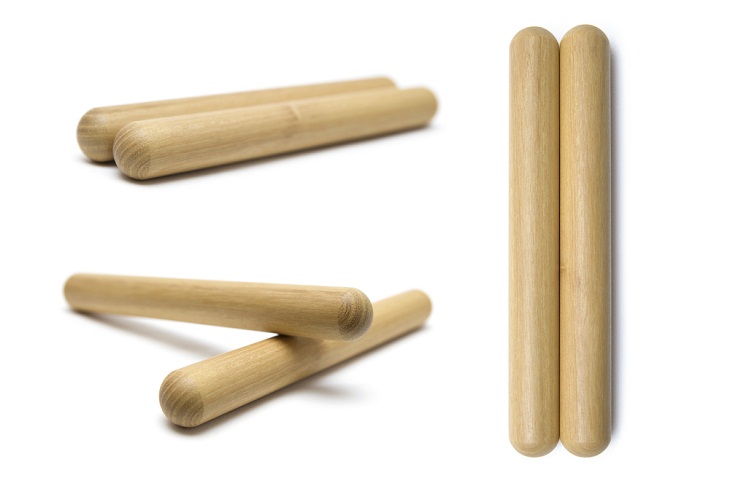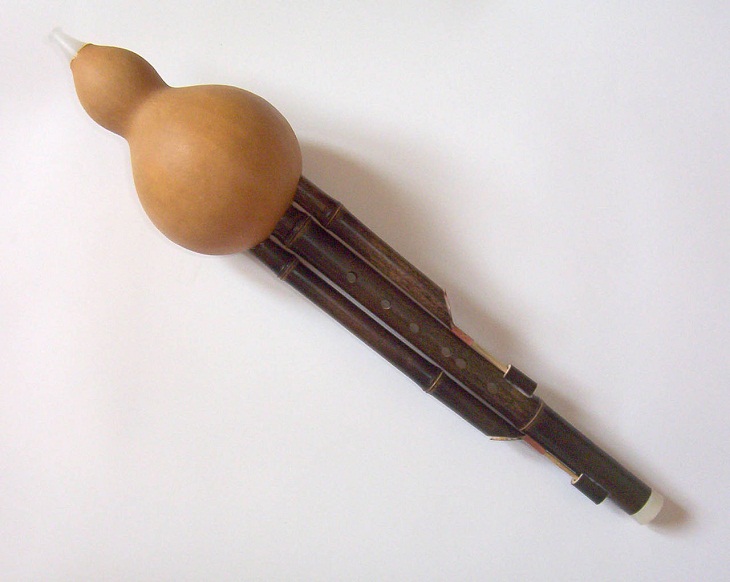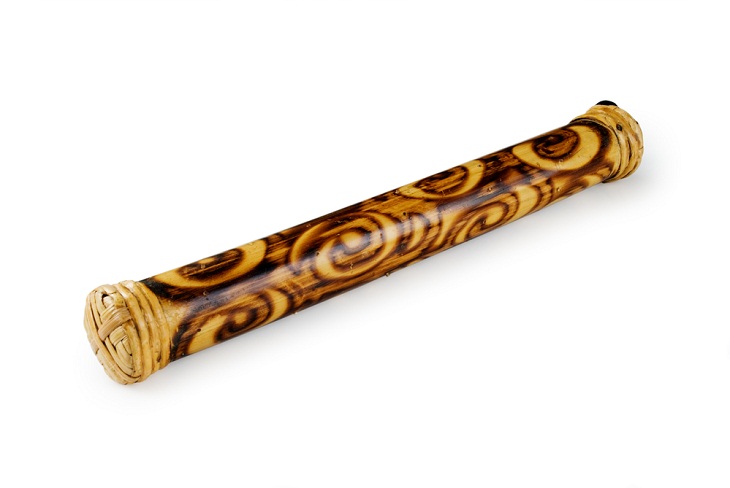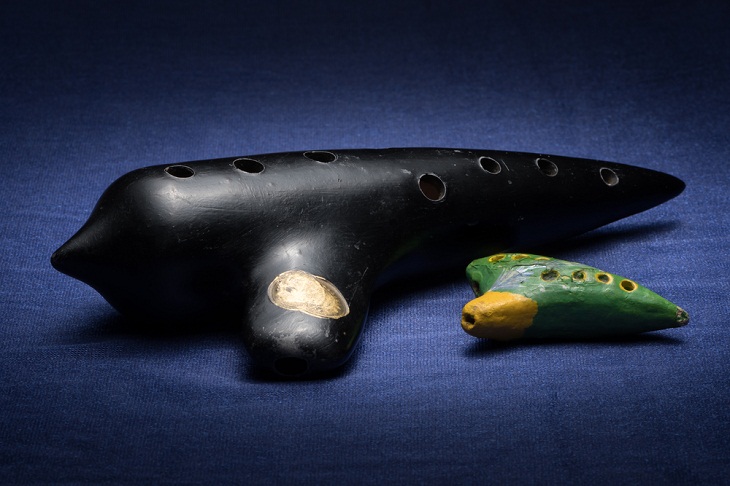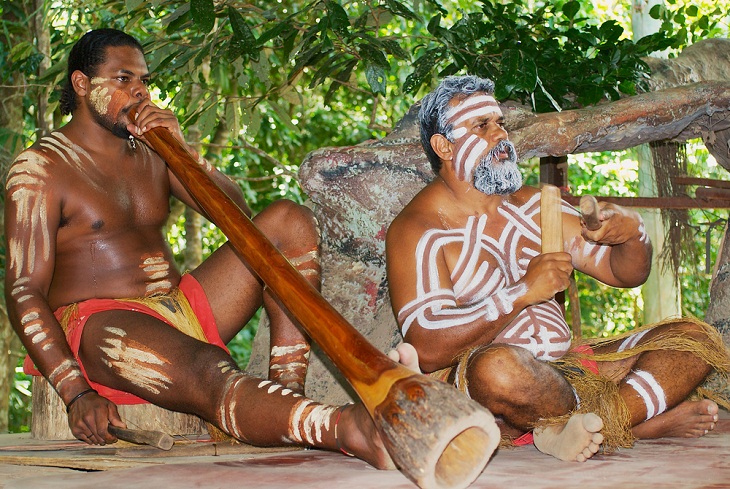Let's begin with one of the oldest instruments in human history. Also known as the Jewish ram's horn or Jewish horn, the shofar is a Jewish musical instrument traditionally made from the horn of a ram. It is most commonly heard during synagogue services on Rosh Hashanah (New Year) and Yom Kippur (Day of Atonement).
A shofar, in addition to being made from a ram's horn, can also be made from sheep or goat's horn. Known for its distinct trumpeting sound, this instrument has been used in religious ceremonies since ancient times. In fact, the Hebrew Bible makes numerous references to the shofar.
Because the shofar lacks valves and pads found in brass and woodwind instruments, its pitch is solely controlled by mouth, facial, tongue, and tooth movements.
2. Claves
Claves are a pair of cylindrical hardwood sticks from the hand percussion musical instrument family. Traditional claves are made of rosewood, ebony, or granadilla. They were an essential part of the original Afro-Cuban music and gained prominence during the period when drums were prohibited. It’s said that claves were originally repurposed wooden pegs used for ship repairs in Cuban harbors.
Claves produce a sharp, clear, and penetrating sound when struck together, capable of holding their own in even large ensembles. Most Latin–American dance bands play them as accompaniments due to their fixed rhythms. The instrument is used in a variety of musical genres, including reggae, salsa, and Cuban music.
3. Gum Leaf
The gum leaf is a unique Australian wind instrument that is played by pressing the leaf between your hands and lips and blowing across its surface. As a result, it vibrates similarly to a reed instrument, creating a high-pitched sound.
It’s believed that the gum leaf was originally used to mimic bird calls as a decoy by hunters. Some historians claim that these leaves were used by Australian aboriginal people to communicate with one another and to call children home.
Renowned leafist Herb Patten is regarded as one of the world's few professional gum leaf players. Watch him create mellifluous music with a gum leaf in the video above.
4. Hulusi
The hulusi is a Chinese free-reed wind instrument primarily made from a gourd and black bamboo. It’s usually played by the men of the Dai and Yi minority tribes in Yunnan, China, to woo and demonstrate love for women. Other locals from the tribe play this instrument while taking a break from fieldwork.
Three bamboo pipes pass through a gourd wind chest to hold the hulusi vertically. Typically, the middle pipe has finger holes, and the outer two are drone pipes. Surprisingly, one of the drone pipes is occasionally just for show and does not function. The drone pipe is equipped with a finger hole through which the pipe can be stopped.
Initially consisting of fourteen notes, the hulusi was first created in 1958. By the 1970s, the hulusi had been developed to include two pipes, each tuned a fourth apart.
5. Frame Drum
The frame drum is among the oldest musical instruments, reputed to be one of the earliest types of drums ever devised. The earliest image of this drum was found in a cave in Turkey. There are numerous examples of women frame drummers being depicted in burial artifacts found throughout Mesopotamia, Turkey, Egypt, Greece, and Israel.
Women were the first to use these drums in cultures all over the world, particularly in the ancient Middle East, Greece, Rome, and Europe. Traditional frame drums are made of two simple materials: wood and rawhide. They have primarily been used in religious ceremonies, parades, and recreational dances.
There are many different styles of frame drums, from relatively small ones to much larger ones, and they can sound incredible. This drum can be played with a mallet or with your hands, making it convenient to incorporate emotion into your performance.
6. Rainstick
Have you ever heard of a rainstick? The traditional method of making them involves beating cactus spines to the inside of cactus tubes and filling the tubes with tiny pebbles. There is no complete consensus regarding the origin of the rainstick, but many people believe that it was probably created by a group of indigenous people from the northern Chilean deserts known as the Diaguita.
Using musical instruments was a common practice in many cultures while praying for rain. The rainstick is one such instrument that mimics the sound of rain. When tilted, the instrument produces rain sounds, which are triggered by the movement of beads along a spiral staircase inside.
7. Ocarina
The ocarina is an ancient wind instrument that consists of an oval body with finger holes and a protruding mouthpiece. Also called the globular flute and sweet potato flute, these instruments were traditionally made from clay. Usually, they have eight finger holes on the top side and two thumb holes on the reverse side. To generate sound, they have a mouthpiece extension with an internal duct that directs the airstream against a beveled edge.
While it was invented in Italy in the 19th century, archeologists say that ocarina-like instruments (a vessel duct flute with fingerholes) first appeared about 12,000 years ago. Archeologists have discovered ocarina-like instruments dating back thousands of years in Latin America alone. Mayans, Incans, and Aztecs played clay ocarinas shaped like birds or animals in conjunction with other percussion instruments and dances.
Ocarinas can also take the form of an animal, either real or mythical, that is significant to the identity of a culture. This is why you can find them for sale at craft markets all over the world.
8. Didgeridoo
Developed 1,500 years ago by the Aboriginal peoples of northern Australia, the didgeridoo is a wind instrument that resembles a trumpet. It’s conical or cylindrical in shape and measures anywhere between 3 and 10 feet (1 to 3 meters).
Traditional didgeridoos were made from fallen eucalyptus branches that had been naturally hollowed out by termites. Modern didgeridoos are commonly made from eucalyptus, bamboo, and agave.
To play this unique instrument, you need to make a continual buzz with your lips, almost like blowing raspberries. The musician blows air down one end with a blowing technique called circular breathing to produce a drone-like sound. Interestingly, each didgeridoo has one basic tone along with a series of overtones that can be altered by the player's lips.
The didgeridoo was traditionally used to provide rhythm during ceremonies and dances. They are still employed in contemporary world music, particularly in beatboxing, dance music, and meditation. However, it’s primarily associated with Indigenous Australian music.


